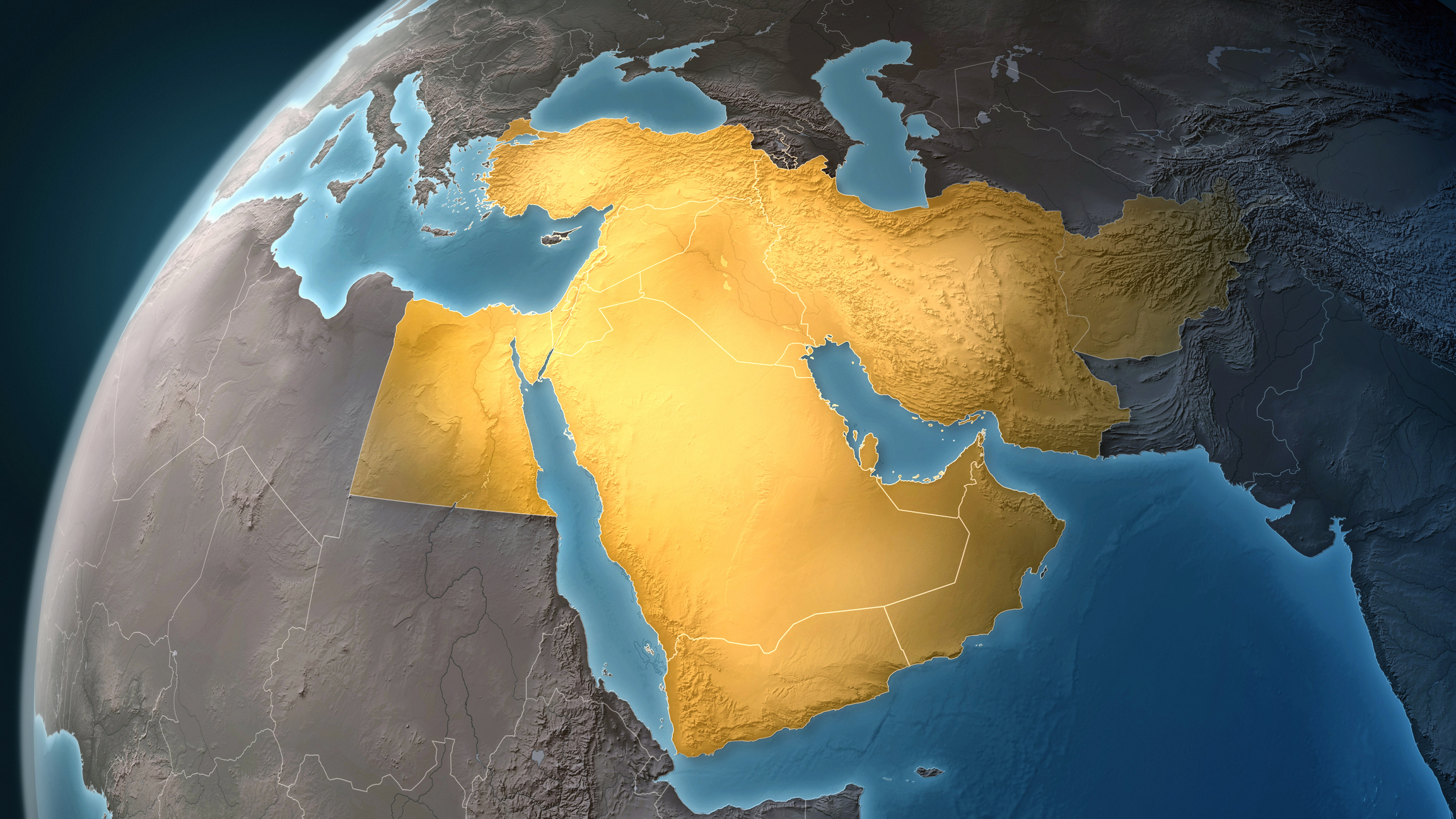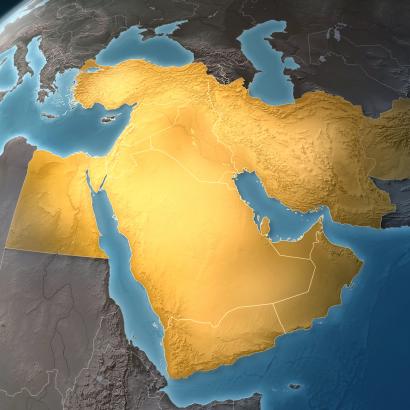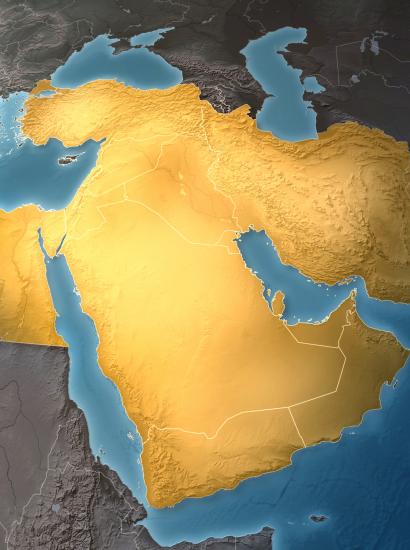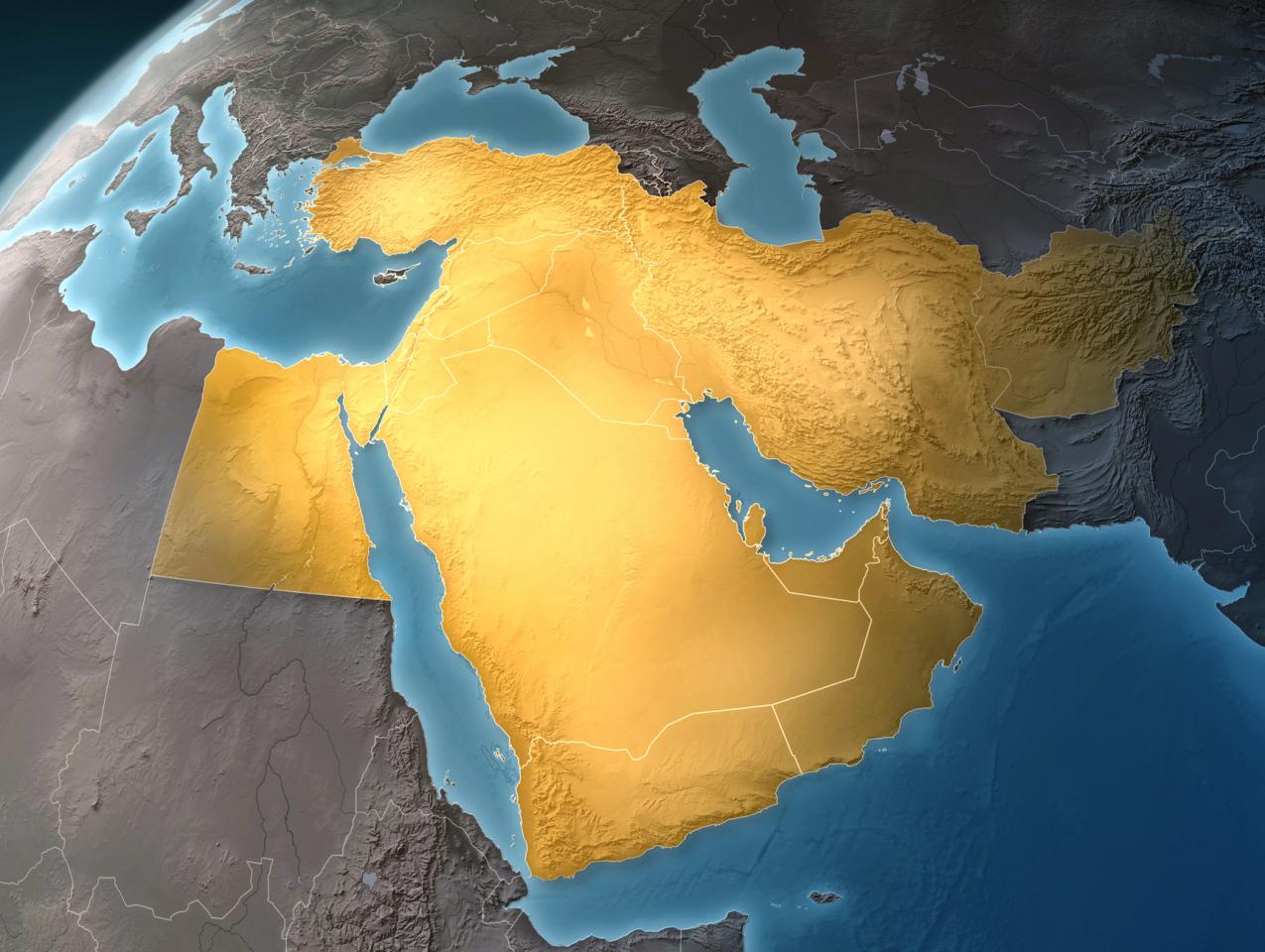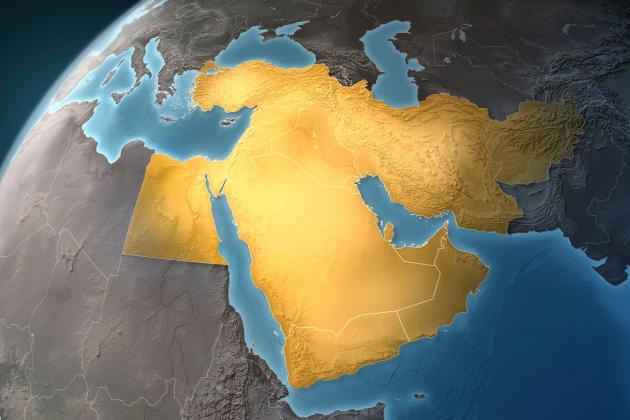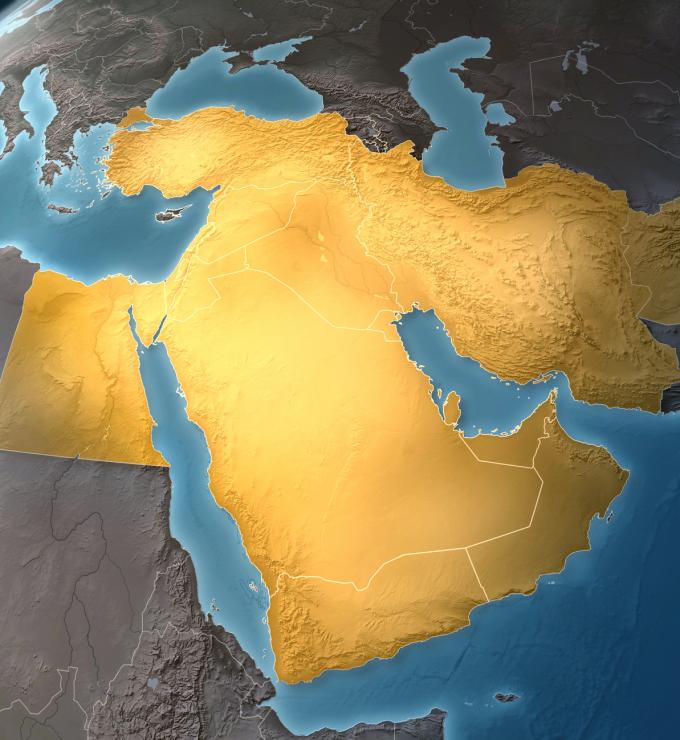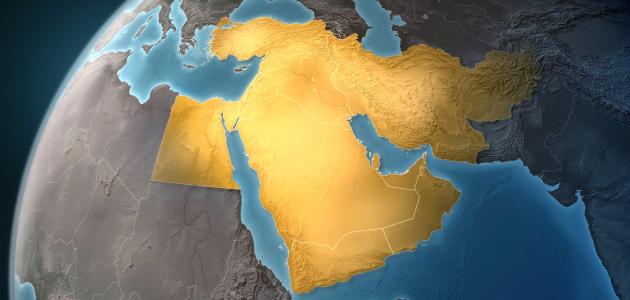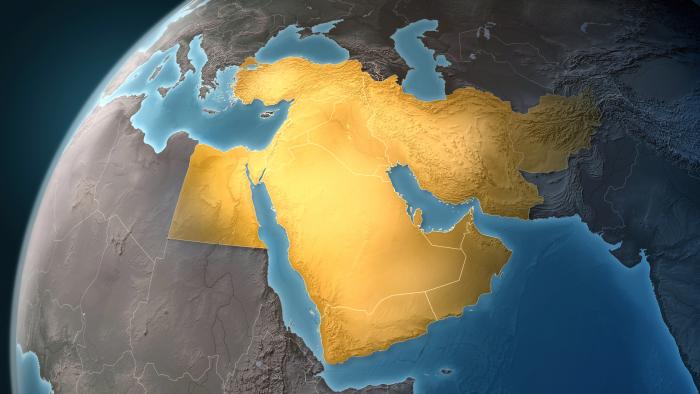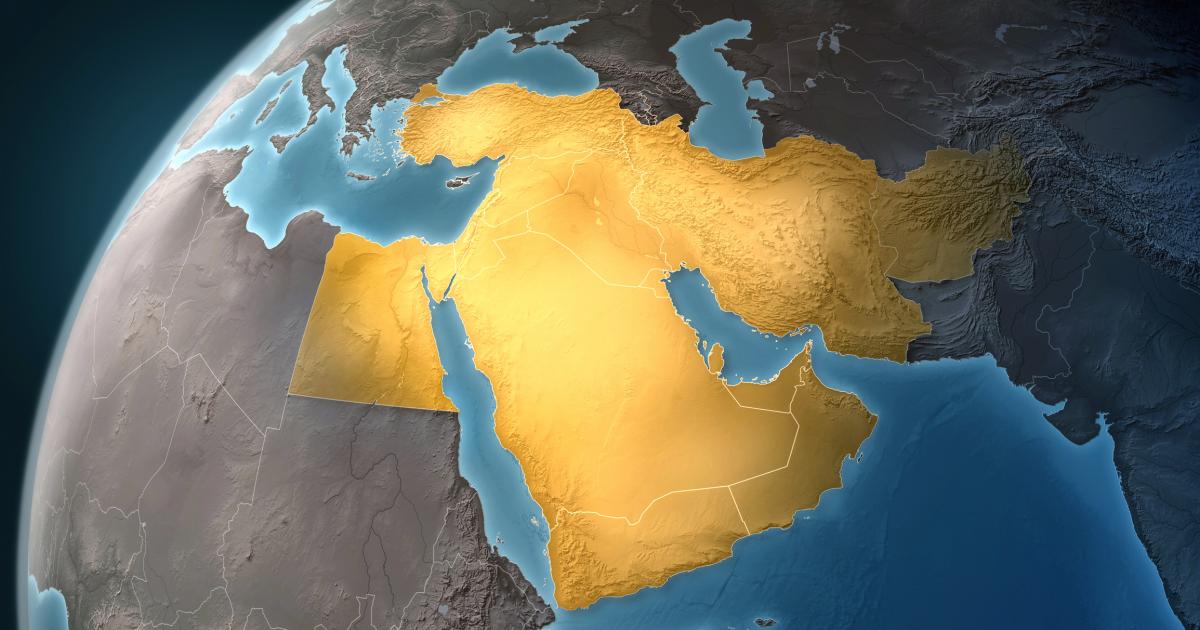The reinsertion of Russia into the Eastern Mediterranean and the Middle East is one of the big stories of the past decade. Although Russia’s recueillement after 1991 resulted in its effective disappearance from the Middle East, her presence in the region is of course not a new reality in history. Tsars and Soviet leaders pushed their military might and political influence into the region for the last three centuries, clashing with various great powers, from the Ottoman sultanate to the British empire and the United States. But the speed at which the current Russian advance has occurred is surprising and troubling. Moscow has inserted an enormous level of instability and unpredictability to the already murky local power dynamics.
For the United States, a destabilizing Russian presence in the region is deeply unhelpful. As the competition with China ramps up and the problems in Europe augment, the U.S. will naturally have to prioritize those regions. The Middle East will simply not get as much American attention as it did over the past twenty years. It is therefore in the U.S. interest to prevent a degeneration of the already tenuous regional order that would require a sizeable commitment of American resources and attention. But Moscow is working in the exact opposite direction of the United States here – and the U.S. should limit Russia’s ability to create more tribulations.
Russia returned to the Middle East because the U.S. left a window of opportunity for her. Putin was emboldened by the lofty but empty rhetoric of the Obama administration. In 2011, President Obama had loudly proclaimed that Assad had to “step aside” in Syria. In 2012, he added that Assad had crossed a “red line” by using chemical weapons. The bold words, however, were never matched by an equally bold policy. Russia had for many years supported Assad, and in fact, his regime was the last quasi-ally of Moscow in this region; calling for Assad’s removal without following up with serious actions was a cost-free invitation to Putin to shore up the Syrian dictator.
Moreover, the Obama administration sought to weaken Assad on the cheap, by arming groups such the Kurdish People’s Protection Units (YPG). This created deep and lasting tensions between the U.S. and Turkey as Ankara considers this particular Kurdish entity too close to the Kurdistan Workers’ Party (PKK), a terrorist organization that has battled Turkish forces since the early 1980s. The resulting strain in U.S.-Turkish relations further enticed Russia to return to the region, forcing Erdogan to accept Putin’s influence in Damascus and to seek some sort of understanding with Moscow. Erdogan, in fact, embarked on an astounding change in posture. Early on, in 2013-2014, Erdogan supported the idea of removing Assad from power while Putin protected the Syrian dictator. In November 2015, in a period of great tensions between the two countries, a Turkish F-16 shot down a Russia SU-24, killing its pilot. Half a year later, however, after Russia imposed various sanctions on Turkey, Erdogan apologized to Moscow for the shooting and began a tilt in favor of Russia, to the point of acquiring Russian anti-air missile systems (S-400) and incurring sanctions from Washington. Over the course of five years, Putin managed not only to retain the Syrian government as an outpost of Russian influence in the region, but also to push a key NATO member, Turkey, to realign in a more sympathetic posture toward Moscow.
This swift Russian projection of power to Syria – and extension of influence to the wider Eastern Mediterranean region – is anomalous but not surprising. It is anomalous for two broad reasons. The first is that land powers such as Russia usually expand in concentric circles, gradually advancing mile after mile. Seapowers do not have the need of controlling contiguous real estate and expand by hopping from one outpost to another. As Nicholas Spykman observed, “a land power thinks in terms of continuous surfaces surrounding a central point of control, while a sea power thinks in terms of points and connecting lines dominating an immense territory.”1 Russia in Syria has jumped to the southern side of Turkey, effectively creating two fronts for this NATO member.
The second reason why this Russian advance is anomalous is that it is a distant projection of power, at the outer limits of sustainability for the Russian military. The 2016 deployment of the smoke belching Admiral Kuznetsov aircraft carrier (and its string of plane accidents) in the Eastern Mediterranean is a symptom of the serious limitations of the Russian military. Russian military presence in Syria is still relatively small, measuring in the low thousands. It is doubtful that Moscow can afford a much larger persistent presence, even though this theater has offered a valuable combat experience to the Russian military forces (by some accounts, for instance, two-thirds of the tactical air force rotated through the Syrian battlefield in the past four years). In brief, Russia here has projected military force farther than it can establish political control.
Both anomalies, however, are puzzling only if we think that Russia’s objectives are analogous to ours: to instill order and maintain effective political control in a state or a region. But Russia is not interested in these goals. Moscow is not eager to rebuild Syria or to ameliorate the humanitarian disaster caused by Assad and the Islamist terrorist groups – but it merely seeks bases from which it can exercise some influence over the Eastern Mediterranean. Moreover, Putin’s approach is to destabilize a region, creating a problem to which he can then offer a solution. This is a time-tested strategy that Russia has employed since its rise in the early 18th century: sowing instability in order to be able then to reorder the area according to its interests. Thus, Russia has presented itself to European leaders as a staunch defender of Christians against the depredations of Islamist terrorists and, to the more secular politicians in Western Europe, as a force to limit the flow of refugees – while at the same time doing little to fight ISIS and aiding Assad in his gruesome suppression of the opposition.
The outcome of Russia’s return to the region is unknown, of course. But so far Putin has achieved two goals. First, Russia has maximized its strategic possibilities by inserting itself into a cauldron of great power competition. Second, the war in Syria is seen by Russian public opinion as a good war, with low casualties and a dramatic improvement in Russia’s image as a world-class great power. More than 70% of Russians support policies that are deemed to enhance the international status of their country. Russia nourishes vast imperial ambitions, matched by Putin’s personal aspirations of proto-tsarist grandeur. It is unlikely, therefore, that Putin will withdraw from the Middle East on his own, as was the hope of many in the Obama administration.
How, then, can Russia be pushed back from the Middle East? How can it be induced to stop destabilizing the region? The answer may be in Ukraine.
Now, as in the past, Russia has three main frontiers and lines of expansion. The Eastern frontier in Asia is currently dormant because China is too powerful and Moscow has no means to oppose it, choosing to accept Beijing’s economic predominance in exchange for Russian security hegemony. The second front is the European or Western one, perhaps the most examined and important because this is where a lot of bloody clashes have occurred since the 17th century. Russia’s westward push has met here the greatest opponents, from Poland and Sweden in the 17th century, to Prussia and Austria in the 18th and 19th centuries, and the Atlantic alliance in the second half of the 20th century. And it is the front that has attracted the most attention in the past decade, since Putin has used military force to oppose the westward leaning posture of two countries: Georgia in 2008 and Ukraine in 2014. Russia’s wars against these two states were clear attempts to oppose the West, seen as encroaching upon states that Moscow deems part of its own empire or hegemony. And these conflicts have achieved the most important strategic objective pursued by Moscow: the effective end of Western enlargement.
But these military operations against Georgia and Ukraine are also part of Russia’s efforts to extend influence toward her Southern frontier. This is the third vector of Russian expansion, toward the Black Sea, the Eastern Mediterranean and the Middle East. It is a turbulent frontier that is constantly fluctuating, with constantly changing and often ambiguous alignments.
Ukraine, in particular, is Russia’s door to Europe but also to the Black Sea and thus, farther out, to the Mediterranean and the Middle East. Without Ukraine, Russia is an Asian power, left to face China on a lengthy steppe frontier. With Ukraine, Russia is an empire that forces itself into Europe’s power dynamics. Paris and Berlin, not to mention capitals closer to Russia, will have to take Russia seriously (albeit responding with strategies that are often very different; Paris, for instance, seeks a rapprochement with Moscow while Warsaw arms and pursues stronger bilateral relations with the U.S.) in the moment Moscow has a foot in Ukraine.
In the past three centuries, Russia’s control over Crimea and the mouths of the Don and Dnieper signaled a conflict with the Ottoman power to the south, as Muscovite forces moved to project influence over the Black Sea and the push their way to the Bosphorus. As a Prussian military leader of the tsarist army said after taking over a key fortress near Crimea in the early 18th century, Russia’s presence there was a “splinter in the enemy’s foot.”2 Such a description continues to be applicable. In the moment Russia solidifies its presence on the shores of the Black Sea, Turkey, and any other great power situated in the Middle East has to deal with Moscow. To put it differently, over the past few years, after Russia’s wars in Ukraine and Georgia, and then with her military deployment in Syria, Turkey realized that Russia is not a land power locked in the distant Muscovite core, but a Black Sea potentate that had to be taken into account. The current problems in the U.S.-Turkey relationship are, therefore, caused by Erdogan’s Islamic authoritarian ways as much as by Russia’s move into the Middle East which has forced Ankara to seek a friendly modus vivendi with Moscow.
From this, it follows that to check Russia’s ability to insert herself into Middle Eastern dynamics and to further disrupt an already volatile region, the U.S. and its allies should strengthen Ukrainian geopolitical independence and weaken Russia’s hold over Crimea and eastern Ukraine. A strong independent Ukraine limits Russian destabilizing southward push. To avoid a highly unpredictable and costly great power competition in the Middle East – a situation that would distract the United States from its more pressing Pacific and European challenges – it is thus best to consider how to push Russia out of it. And the path to that goal runs through Ukraine.
Jakub Grygiel is an associate professor of politics at The Catholic University of America (Washington, DC). His latest book is Return of the Barbarians (Cambridge University Press, 2018).
1 Nicholas J. Spykman, “Geography and Foreign Policy, II,” American Political Science Review, Vol. 32, No. 2 (April 1938), 224.
2 William Fuller, Strategy and Power in Russia, 1600-1914 (New York: The Free Press, 1992), 150.







